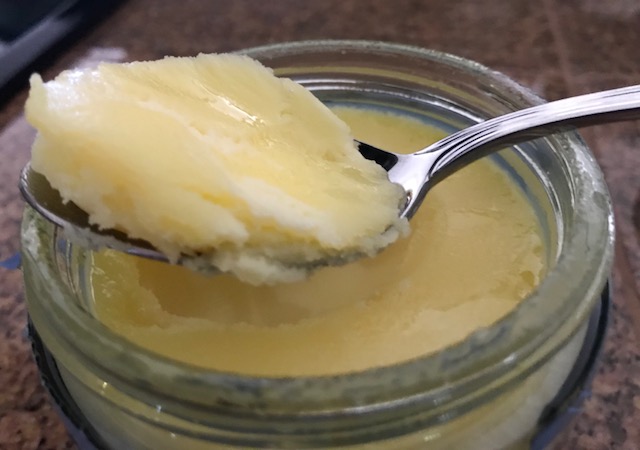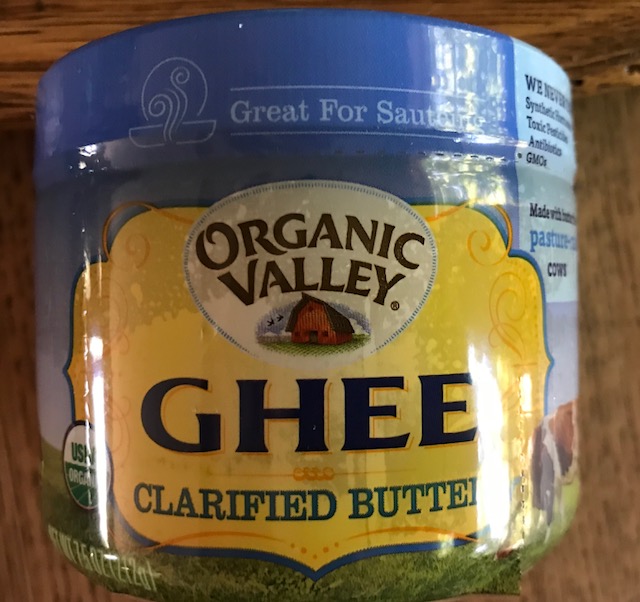If you are on the ketogenic diet (a high fat, low carb eating plan) for your Parkinson’s, you probably know about ghee. Ghee is like clarified butter, and it is considered a healthy fat alongside olive oil and coconut oil. Ghee is full of fat-soluble vitamins and healthy fats, and the benefits range from promoting bone health to great anti-inflammatory properties. It has been used for thousands of years and a staple in Ayurvedic healing practices.

What is Ghee?
It is butter that has been heated long enough to remove the solids and water. So people who typically are lactose or dairy sensitive can eat ghee. This process increases the smoke point, bringing out its rich nutty flavor and the beneficial nutrients of several fatty acids.
Ghee Benefits
- Ghee is free of lactose and casein, and most people who are intolerant or allergic to dairy can enjoy ghee.
- Ghee has a high smoke point (the temperature at which an oil begins to burn). Most fats have a low smoke point which increases the risk of starting a fire, but also breaks down important phytonutrients causing the fat to oxidize and form harmful free radicals.
- Ghee is high in butyrate. Butyrate is a fatty acid which provides energy for the cells in the colon, helps support gut barrier function, fights off inflammation, and may provide relief from constipation. Butyrate is key to promoting a healthy gut microbiome, which plays an integral role in health and disease.
- Ghee is really high in conjugated linoleic acid (CLA), another fatty acid associated with a long list of health benefits.
- Ghee also contains several fat-soluble vitamins, including vitamins A, E, and K. Vitamin K is essential to many aspects of health, such as blood clotting, heart health, and brain function.
- Ghee is incredibly versatile and easy to use. It can replace other fats in your diet and can be used for roasting, sautéing, or baking a variety of dishes.
Where to Find and How to Use Ghee

Ghee is widely available at most grocery stores. It can typically be found in the ethnic food section or next to other oils (such as coconut oil). Look for a grass-fed and/or organic option when possible, or try making ghee at home yourself (recipes can be found on the internet).
Sources:
https://www.medicalnewstoday.com/articles/321707.php
https://www.healthline.com/nutrition/ghee